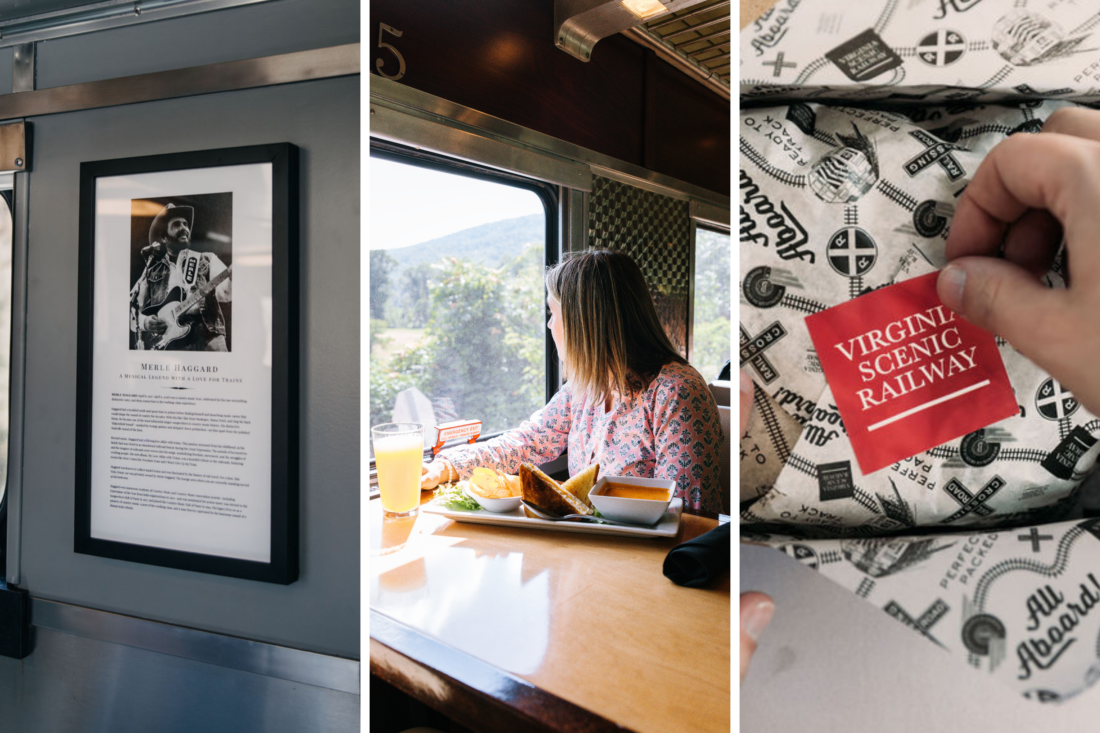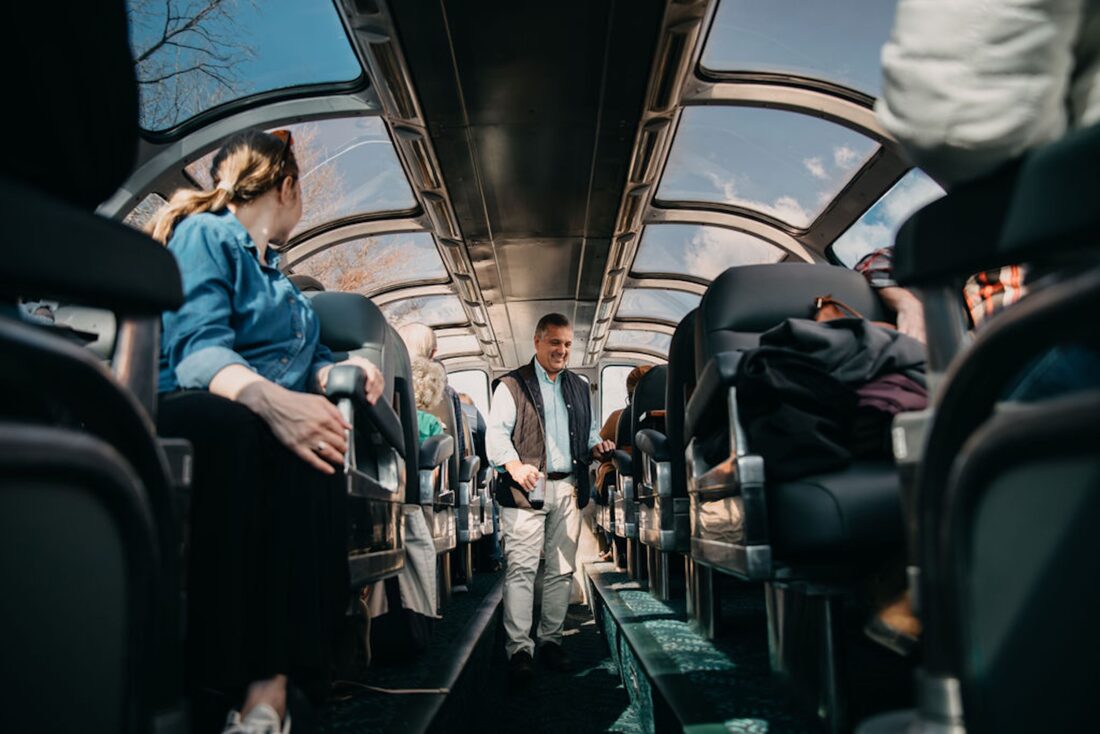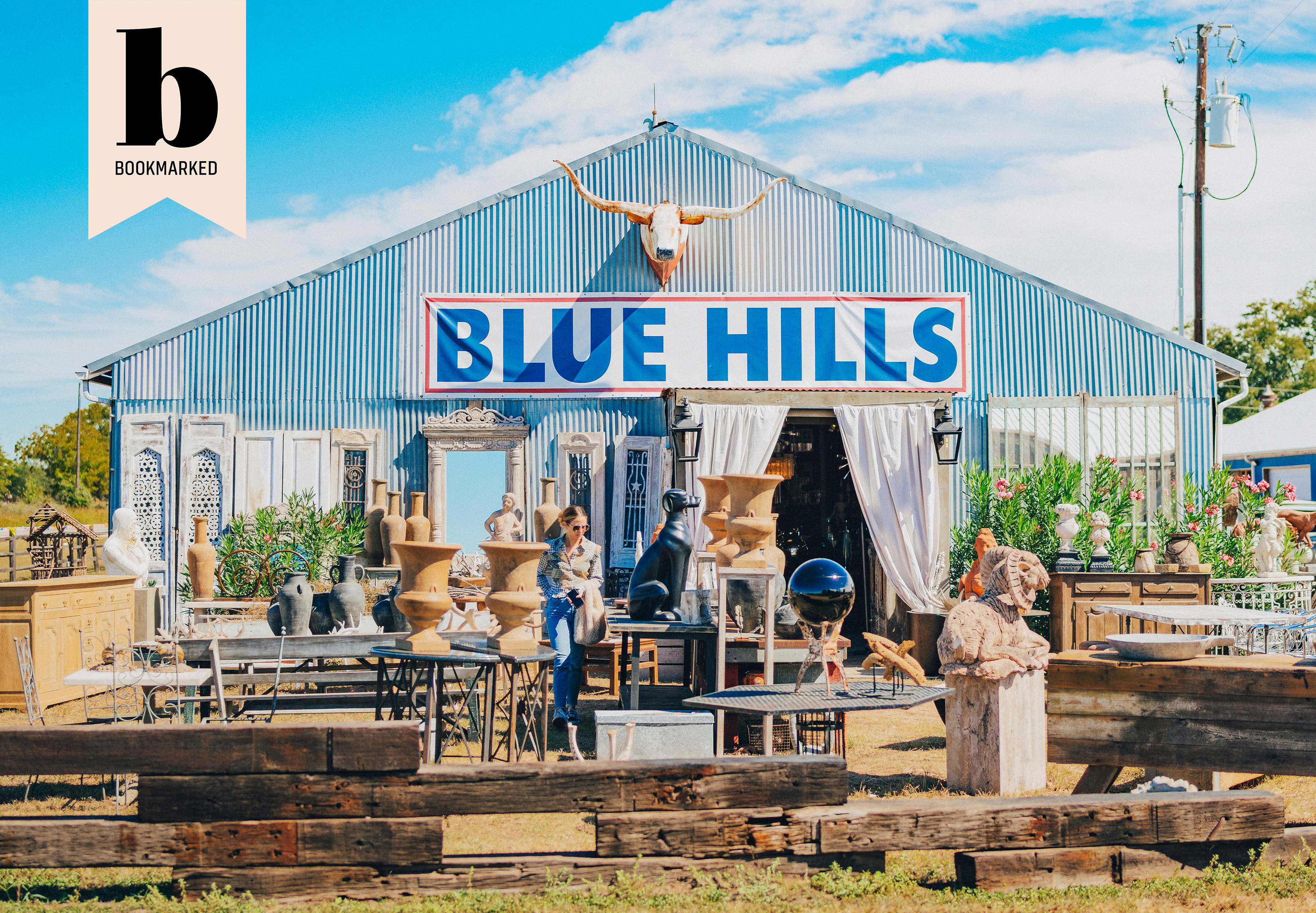
Waitin’ for a Train: Now You Can Actually Ride in Merle Haggard’s Personal Dome Car
Country music legend Merle Haggard once told NPR’s Terry Gross that he hopped his first train at age five. The son of a Santa Fe Railroad carpenter had a lifelong love affair with locomotives—so much so that he actually named his twentieth studio album My Love Affair with Trains. Now, fans of rail travel, country music, and Americana can step into that legacy aboard Haggard’s former personal dome car, which was recently added to the Virginia Scenic Railway’s lineup. Beginning April 5, the iconic observation car will be the star of new three-hour ride-and-dine tours through the picturesque Shenandoah Valley, offering passengers a front-row seat to both stunning landscapes and music lore.
You might assume, as I did, that growing up in a boxcar in Depression-era California would sour a man on the railroad life—but not so for the Hag. In fact, the converted railcar his father turned into the family home seemed to enchant the young musician. His father died when the singer was just nine, but the magic of that humble abode—and the tracks that ran beside it—stayed with him, even as he entered a life of lawlessness, passing phony checks and committing grand theft auto, choices that would land him in San Quentin State Prison by age twenty.
Ironically, it was behind bars that Haggard happened to catch the famous Johnny Cash performance (which included his locomotive-laced single “Folsom Prison Blues”) that turned the delinquent around. Haggard later credited the experience with inspiring him to get his own life back on track and pursue his natural gift for music. But even after reaching thirty-eight number-one hits on the country music charts, his nostalgia for his wild days riding rails stayed strong.
Haggard’s dome car, the Silver Palace.
This might explain how he came to lease the Silver Palace, a swanky 1948 observation car originally built for the Western Pacific Railroad. The timeline’s a little murky. Fortunately I’m married to a history teacher with a Rolodex full of fellow old-timey enthusiasts, including Byron Faidley, digital collections manager at Washington & Lee University and a bona fide train enthusiast who quickly cleared up my fuzzy facts about the car’s provenance.
“Long story short, it looks like Merle leased the car for about a year, starting in 1985,” Faidley told me. “During that time, the car underwent or was undergoing major renovations, after which it ended up getting repossessed by the folks that leased it to him in 1986. Merle files for bankruptcy in 1992, so he may have been overly ambitious with a rail car restoration project. Most folks are. All of the alimony”—Haggard famously had five wives—“and drugs probably didn’t help either.”
Why would Haggard even want the Vista dome coach, noted for its second-story views and retro-glam vibes? For that, I had to call in a different kind of specialist: G&G contributing editor and resident music master Matt Hendrickson. Hendrickson echoed what I’d suspected but hadn’t quite stitched together (ahem, Mama tried!). He thought that Haggard may have leased the thing for his doomed whistle-stop tour, a rolling Farm Aid campaign to drum up support for the country’s struggling farmers. The timing certainly tracks: Haggard took possession of the shiny car in 1985, the same year his train (dubbed the American) was set to take off from Bakersfield, California, with two hundred musicians, including Willie Nelson and Bob Dylan, farm group officials, and members of the press.

At the very least, the Farm Aid theory explains why the Silver Palace features a hide-a-bed. Perhaps Hag anticipated needing to grab a few winks between stops on the campaign trail. Alas, the epic stomping tour was a bust. Haggard couldn’t come up with the cash to fund the enterprise, and the dome car eventually ended up back in service with the Canadian National Algoma Central Railway Agawa Canyon Tour Train, according to Adam Auxier, Railexco CEO and the car’s current owner, before winding its way years later to the charming town of Staunton, Virginia.
“That’s probably exactly what it was,” says Steve Powell, the Buckingham Branch Railroad president who owns and operates the Virginia Scenic Railway, in response to our Farm Aid tour hypothesis. “I bet that’s why he added a kitchen and a shower, too.”

Buckingham Branch Railroad president Steve Powell.
While Merle’s dream tour may have derailed, his dome car is finally living its best life. The Virginia Scenic Railway renovated the historic carriage with a modern aesthetic anchored by silver and grey tones, and now it’s chugging through some of the Shenandoah Valley’s most postcard-perfect landscapes.
“They don’t make these cars anymore, and we’ve been trying to get one ever since we started these excursions a few years ago,” Powell says. “Up here [in the dome], you’re higher than the rest of the cars, even the engine, so you get 360-degree views.” The train glides along at a leisurely twenty-five miles per hour—more of a crawl compared to Amtrak’s sixty miles per hour—allowing passengers to take in the surroundings.
This month, rail buffs and scenery seekers alike can get a first look at the car—either downstairs in the family-friendly lounge or upstairs in the adults-only dome—during a three-hour ride aboard either the Allegheny Special or the Blue Ridge Flyer, which clanks from Staunton toward the charming hamlet of Ivy, Virginia. Upstairs, expect box lunches and for-purchase local pours from King Family Vineyards and Basic City Beer Co.—all served with a side of panoramic beauty. And if the rhythm of the rails tempts you to hum a classic Haggard tune, don’t fight it. It’s safe to say Merle would’ve tipped his hat and done the same.










